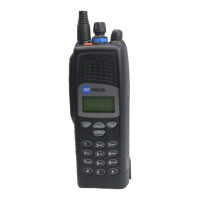160 Frequency Synthesizer Fault Finding TP9100 Service Manual
© Tait Electronics Limited May 2005
9.1 Initial Checks
Types of Checks There are two different types of initial checks, which are covered in the
following tasks:
■ Task 1: calibration checks
■ Task 2: lock status
Which, if any, of these tasks needs to be carried out depends on the
symptoms of the fault.
Symptoms of Fault The symptoms of the fault may be divided into three categories:
■ radio fails to power up and System error is displayed
■ Out of lock is displayed (lock error)
■ radio is in lock but exhibits transmit or receive fault
For the first two cases, the checks of Tasks 1 and 2 respectively are required.
In the last case there are several symptoms; these are listed below.
Transmit and
Receive Faults
A transmit or receive fault will be implied by one of the following
consequences:
■ radio fails to receive or receive performance is degraded
■ radio fails to enter transmit mode
■ radio exits transmit mode unexpectedly
■ radio enters transmit mode but fails to transmit
■ radio enters transmit mode but transmit performance is degraded
With a fault of this kind, neither of the initial tasks is required.
Fault diagnosis should begin with “Power Supplies” on page 163.
Summary To summarize, given the nature of the fault, proceed to the task or section
indicated below:
■ Task 1: system error
■ Tas k 2: l o ck e r ro r
■ “Power Supplies”: transmit or receive fault
The checks of Tasks 1 and 2 will indicate the section with which the fault
diagnosis should continue. Note that there are some differences in the fault-
diagnosis procedures, depending on whether the radio is a UHF (H5 and
H6 bands) or VHF (B1 band) radio. The product-code label on the radio
body will identify the frequency band as described in “Product Codes” on
page 15.

